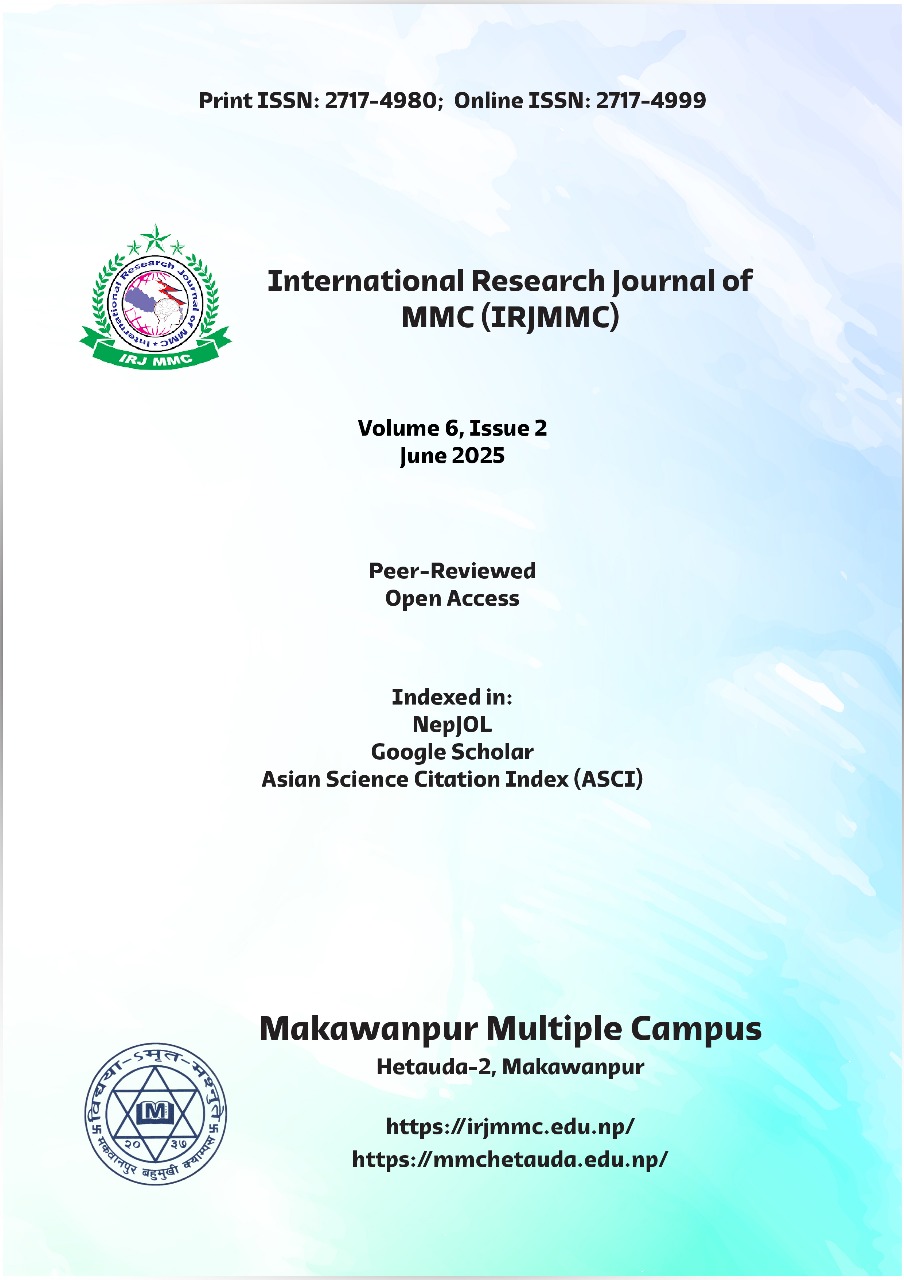Unveiling the Implications of Punctuation Marks in English Poetry
DOI:
https://doi.org/10.3126/irjmmc.v6i2.80551Keywords:
English poetry, punctuation, stylistic analysis, structuralism, enjambmentAbstract
Punctuation marks in poetry serve as critical tools that guide the reader’s interpretation and engagement with the poetry. The key objective of this article is to unveil the implications of punctuation in English poetry. This study employed an exploratory research design in which poetic lines from different poems by the poets were treated as the primary data, and supportive materials taken from books, journal articles and websites were considered the secondary data. A stylistic analysis was executed based on the implications of nine punctuation marks: period, comma, question mark, dash, semi-colon, colon, exclamation mark, ellipsis and parenthesis. The findings reveal that punctuation plays a prominent role in shaping the meaning, rhythm, and emotional depth of English poetry. This study depicts that the strategic use of commas, periods, dashes, colons, and other marks to create pauses, emphasize specific words or phrases, and build tension or release within the poetic narrative. Moreover, the study considers how the absence of punctuation can evoke ambiguity and invite multiple interpretations, contributing to the richness and complexity of poetic works. This article is substantial for students, teachers, and poetry lovers as it offers a comprehensive understanding of how punctuation in English poetry is not just a technical detail but a crucial element that significantly influences the reader's interpretation and enhances the overall aesthetic experience.
Downloads
Downloads
Published
How to Cite
Issue
Section
License
Copyright (c) 2025 International Research Journal of MMC (IRJMMC)

This work is licensed under a Creative Commons Attribution-NonCommercial 4.0 International License.




